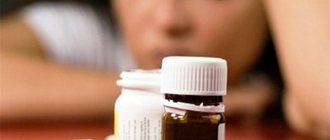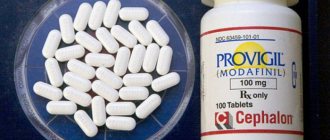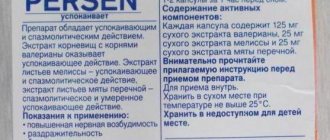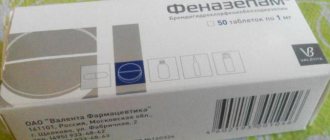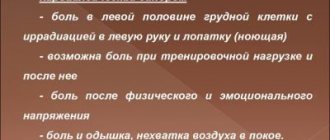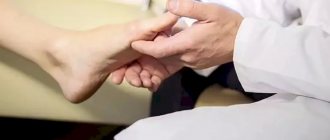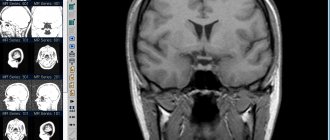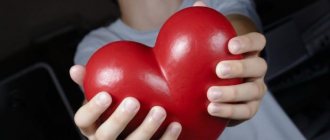Depression is one of the most pressing problems of modern medicine. In the global structure of the disease burden (death + disability), major depressive disorders (MDD) currently occupy fourth place among all pathologies, and by 2020 they are predicted to move to second place (after coronary heart disease (CHD)) [1].
E.A. Ushkalova, Doctor of Medical Sciences, Professor, A.V. Ushkalova, Peoples' Friendship University of Russia, Moscow
Overall, MDD affects about 6% of men and 18% of women [2]. The lifetime risk of the disease is 7-12% for men and 20-25% for women [3]. MDD is observed approximately 2 times more often in women than in men. The peak incidence occurs between 20 and 40 years of age. However, in recent years there has been an expansion in the age range of incidence. Thus, in the multicenter COMPASS study, conducted in 35 cities of the Russian Federation and including 10,541 patients aged 18 to 100 years, the risk of depressive spectrum disorder and severe depressive states increased for every 10 years of life, respectively, by 1.2 and 1.4 times [ 4 ]. Foreign researchers also report a wider spread of depression among the elderly than previously thought.
In somatic patients, the prevalence of depression reaches 22-33% and is comparable to the prevalence of arterial hypertension (AH) [5], and, according to some data, even exceeds it [6]. The risk of depression is highest in patients with cardiovascular diseases, primarily coronary artery disease, myocardial infarction (MI) and heart failure (HF), diabetes mellitus and other endocrine disorders, malignant neoplasms, HIV/AIDS and hepatitis C. Prevalence of depression among of patients with severe somatic diseases reaches 20-60% [7, 8].
With targeted screening, depression is observed in 45-95% (on average 69%) of patients seeking medical help for somatic symptoms [9]. Depression is the sole reason for 10-20% of visits to general practitioners [10]. According to domestic and foreign studies, the prevalence of depression among patients with coronary artery disease is on average 20%, among hospitalized patients - more than 30% [11]. It is detected in 17-27% of people with coronary artery disease undergoing coronary angiography [12, 13], and in a third of patients who have undergone coronary artery bypass grafting [14]. In the acute period of MI, symptoms of depression are observed in 65% of patients, and within 18-24 months after MI – in every fourth patient [6]. Depression was most common (40%) in younger women, according to a recently published epidemiologic study that analyzed data from 2,498 patients hospitalized for acute MI at 19 U.S. medical centers between January 2003 and June 2004. 60 years [15]. The comorbidity of depression and hypertension is approximately 30% [4, 16].
Classification of antidepressants
There are four types of psychotropic substances used to treat VSD:
- Tricyclic - amitripline and its derivatives. Its stimulating effect was discovered in the 50s of the last century. In the CIS, half of the antidepressants used in medical practice are based on this substance. These drugs have a very strong effect on almost all metabolic processes in the central nervous system. However, tricyclic substances are very dangerous: the slightest overdose of the drug can turn a person into an indifferent person.
- Tetracyclic: Lerivon, Ludiomil, Pyrazidol. In science, they are classified as irreversible monoamine reuptake inhibitors (retarders). They affect only certain areas of the nervous system. Compared to drugs in the first group, this class of substances has a slightly gentler effect on the body. However, they have strong side effects, which increase in combination with other medications.
- Selective serotonin reuptake inhibitors: Prozac, Paroxetine, Cipralex, Zoloft. This category of psychotropic substances is most often used in modern medicine. They have a milder effect compared to the two groups of drugs described above.
- Selective serotonin and norepinephrine reuptake inhibitors: Remeron, Cymbalta, Venlafaxine. They were developed at the beginning of the 21st century and are still rarely used. These antidepressants are as powerful as tricyclics, but have minimal side effects.
Side effects of antidepressant drugs
“Maria’s depression was difficult to treat. Various medications were tried to no avail, but after several months of treatment, Maria eventually became stable on a combination of two antidepressants. She is now able to do her usual activities and can return to work.
But despite the overall improvement, she is starting to see side effects from her medications that are quite bothersome, some aggravating her depression, like severe weight changes. Maria is even considering stopping her medication prematurely because she has ALREADY gained a lot of weight from the antidepressants.
Depression symptoms and treatment
Features of the use of antidepressants in the treatment of VSD
During this period, tranquilizers are also prescribed, which have a faster effect. The share of antidepressants is gradually increasing. The course of treatment with psychotropic substances is 4–6 months and about another 1 month so that the body gradually weanes itself off them.
They have the following side effects:
- increased blood and intraocular pressure;
- gastrointestinal disorders;
- nausea;
- headache;
- intoxication of the kidneys and liver;
- violations;
- disturbances in the functioning of the genital organs;
- memory lapses;
- drowsiness;
- general weakness of the body.
Usually they appear only in the first month.
The use of psychotropic substances has a number of contraindications. Combining drugs containing serotonin can cause a crisis, mental disorder and lead to death. In order to avoid this, the patient should take a new drug no earlier than 2 weeks from the date of the last dose of the previous antidepressant.
In addition, most of these drugs are incompatible with alcohol. Women should also refrain from using this group of medications during pregnancy and lactation.
The choice of drug depends on what type of VSD is observed in the patient: cardiac (i.e., disruptions in the heart), hypertensive (high blood pressure) or hypotensive (low blood pressure). This is important because each antidepressant has its own effect on the functioning of the cardiovascular system.
There are quite conflicting reviews about the effects of antidepressants. On the one hand, these drugs really eliminate negative emotions, improve mood and activate the central nervous system. In other words, they can effectively stop the most acute phase of VSD. Also, the drugs have a milder effect and do not cause such harm to the body compared to first-generation drugs.
However, there are many opponents of the widespread use of these drugs for the treatment of VSD. Their arguments are as follows:
- A large number of side effects;
- The uncontrolled circulation of these psychotropic substances leads to the fact that they are bought by drug addicts, looking for cheap substitutes for heroin and cocaine.
- Anti-depression pills are overpriced. In the CIS countries their cost is 2–3 times higher than in the West.
- Treatment with these drugs can take many years.
However, those who express both positive and negative reviews agree that drugs for the treatment of VSD should be used exclusively under the supervision of a physician.
This kind of medicine is recommended for patients with such pronounced disorders of the nervous system. They help cope with causeless worry, anxiety and paranoia.
Tranquilizers include medications:
- "Adaptol";
- "Gidazepam";
- "Afobazole";
- "Buspirone."
Some of the most effective drugs for this disease are antidepressants for VSD and tranquilizers for VSD. They are aimed at eliminating fears, anxiety, and depression.
Tranquilizers for VSD (Phenozepam) normalize sleep, eliminate tension, and improve blood pressure. They can only be dispensed with a doctor's prescription.
Antidepressants are no less beneficial for VSD. They improve mood, stabilize neurocirculatory functions in the nervous and cardiovascular systems.
The most commonly prescribed antidepressants for VSD are:
- Leviron.
- Cipralex.
- Parisidol.
Popular tranquilizers for VSD are:
- Nozepam.
- Tazepam.
- Napoton.
- Elenium.
You should know that these drugs (tranquilizers for VSD and antidepressants for VSD) must be selected very carefully, since some of them are addictive and can further worsen the patient’s condition.
Ventricular extrasystoles (VES) are extraordinary contractions of the heart that occur under the influence of premature impulses that originate from the intraventricular conduction system. Under the influence of an impulse generated in the trunk of the His bundle, its legs, branches of the legs or Purkinje fibers, the myocardium of one of the ventricles contracts, and then the second ventricle without previous atrial contraction.
In this article, we will consider the causes of ventricular extrasystole, its symptoms and signs, and talk about the principles of diagnosis and treatment of this pathology.
Extrasystoles can appear in healthy people after taking stimulants (caffeine, nicotine, alcohol).
Ventricular extrasystole can be observed in healthy people, especially with 24-hour electrocardiogram monitoring (Holter-ECG). Functional PVCs are more common in people under 50 years of age. It can be triggered by physical or emotional fatigue, stress, hypothermia or overheating, acute infectious diseases, taking stimulants (caffeine, alcohol, tannin, nicotine) or certain medications.
Functional PVCs are often detected with increased activity of the vagus nerve. In this case, they are accompanied by a rare pulse, increased salivation, cold wet extremities, and arterial hypotension.
Functional PVCs do not have a pathological course. When the provoking factors are eliminated, they most often go away on their own.
In other cases, ventricular extrasystole is caused by organic heart disease. For its occurrence, even against the background of heart disease, additional exposure to toxic, mechanical or autonomic factors is often required.
Often PVCs accompany chronic ischemic heart disease (angina pectoris). With daily ECG monitoring, they occur in almost 100% of such patients. Arterial hypertension, heart defects, myocarditis, heart failure and myocardial infarction are also often accompanied by ventricular extrasystole.
This symptom is observed in patients with chronic lung diseases, alcoholic cardiomyopathy, and rheumatism. There is extrasystole of reflex origin associated with diseases of the abdominal organs: cholecystitis, gastric and duodenal ulcers, pancreatitis, colitis. Another common cause of ventricular extrasystole is a metabolic disorder in the myocardium, especially associated with the loss of potassium by cells.
Drugs that can cause ventricular arrhythmias include primarily cardiac glycosides. They also occur when using sympathomimetics, tricyclic antidepressants, quinidine, and anesthetics.
Most often, PVCs are recorded in patients who have serious changes on the ECG at rest: signs of left ventricular hypertrophy, myocardial ischemia, rhythm and conduction disturbances. The frequency of this symptom increases with age and is more common in men.
With a certain degree of convention, we can talk about different symptoms for functional and “organic” PVCs. Extrasystoles in the absence of severe heart disease are usually single, but are poorly tolerated by patients. They may be accompanied by a feeling of freezing, interruptions in heart function, and isolated strong beats in the chest.
Organic PVCs are often multiple, but patients usually do not notice them. They appear during physical activity and go away with rest, in a lying position. In many cases, such PVCs are accompanied by rapid heartbeat (tachycardia).
Diagnostics
The main methods of instrumental diagnosis of ventricular extrasystole are ECG at rest and 24-hour Holter ECG monitoring.
Signs of PVC on ECG:
- premature dilated and deformed ventricular complex;
- discordance (multidirectionality) of the ST segment and T wave of the extrasystole and the main wave of the QRS complex;
- absence of a P wave in front of the VES;
- the presence of a complete compensatory pause (not always).
Interpolated PVCs are distinguished, in which the extrasystolic complex is inserted, as it were, between two normal contractions without a compensatory pause.
If PVCs come from the same pathological focus and have the same shape, they are called monomorphic. Polymorphic PVCs emanating from different ectopic foci have different shapes and different coupling intervals (the distance from the previous contraction to the R wave of the extrasystole). Polymorphic PVCs are associated with severe cardiac damage and a more serious prognosis.
Early PVCs (“R to T”) are classified into a separate group. The criterion for prematurity is the shortening of the interval between the end of the T wave of sinus contraction and the beginning of the extrasystole complex. There are also late PVCs that occur at the end of diastole, which may be preceded by a normal sinus P wave, superimposed on the beginning of the extrasystolic complex.
VES can be single, paired or group. Quite often they form episodes of allorhythmia: bigeminy, trigeminy, quadrigeminy. With bigeminy, a VES is recorded through every normal sinus complex; with trigeminy, a VES is recorded every third complex, and so on.
During daily ECG monitoring, the number and morphology of extrasystoles, their distribution during the day, and dependence on load, sleep, and medication are specified. This important information helps determine the prognosis, clarify the diagnosis and prescribe treatment.
The most dangerous in terms of prognosis are considered to be frequent, polymorphic and polytopic, paired and group VES, as well as early extrasystoles.
The differential diagnosis of ventricular extrasystoles is carried out with supraventricular extrasystoles, complete block of the bundle branches, and escaped ventricular contractions.
About antidepressants
We are looking for an employee for our pharmacy, which is extremely well located, right between the Norman and RosAl alcohol markets, right opposite the Ryumochnaya cafe. For the “Strengthening” vacancy and only on Thursdays.
The desperate pharmacy not only advertised the booster on search sites, but also posted a notice on the door:
“We need an employee!
Patient and compassionate final year student/NT (no matter) for strengthening, for Thursday.
Registration according to TC.
Contact the manager.
Are looking forward to!"
On Thursdays at the pharmacy, no, not fish day, there are discounts. For beneficiaries.
The most tempting - up to 50%. Depending on the degree of preferential treatment.
Simple (not combined) beneficiaries, for example, pensioners, together with a pension certificate, can purchase on Thursday simple medicines, such as aspirin and Andipal, with a 30% discount.
But, if a pensioner is also an orphan mother of many children who suffered radiation sickness, and a labor veteran, and a combat veteran awarded the medal “For Victory over Japan,” then the discounts on difficult drugs (like Viagra) are simply off the charts.
It’s not worth talking about the fact that a line of honored citizens gathers at the pharmacy door for the opening. The number of discounters exceeds the number of those wishing to hangover at Norman, RosAl and Ryumochnaya (taken together) by several times.
Nice girls, pharmacists, pharmacists, watching the growing queue of those suffering for treatment, put on stone faces, pray for patience and for the end of the shift. Manager Larisa Ivanovna encourages the team:
- Nothing! Nothing! We'll close at ten...
Today, Thursday, all four pick-up windows are open; moreover, all reserve chairs and benches are being pulled into the hall. Everything for the convenience of waiting beneficiaries.
There are three machines for measuring blood pressure in the hall today, and not one, as usual (by the evening there will be two, because the owner of the peach poodle and the medal “For Victory over Japan” from the third front door, an old woman with blue hair, in a fit of girlish memory, will carry away home alone.
True, he will forget the poodle).
Moreover, countless thermometers and notebooks with pens were laid out to clarify symptoms for beneficiaries. And - so that they do not forget these symptoms (on the way to the window).
The student who came for reinforcement has already been treated kindly by the team to the fullest - the main thing is that she does not run away. She has already been given the best locker in her wardrobe. With a door. They gave me tea and took me to the toilet. Both Larisa Ivanovna and the girls address her tenderly: Marinochka is a girl. All because she is now in the gym, on the front line. It is she who will take on the first shock wave until the end of the shift - consulting.
Larisa Ivanovna (with notes of an experienced bander in her voice) admonishes the new girl:
– Marinochka – don’t be shy! Everything will be fine! The main thing is to speak a lot and convincingly. A lot, remember! And clarify endlessly - they forget what they wanted.
With round ones like a cat in a tray, Marinka the girl regrets. She regrets that she came to “strengthen”, that she wanted money, that she completed three pharmaceutical courses and an entire chemical and biological lyceum.
Larisa Ivanovna is perspicacious and understands that she will not come again, but says in a Christian way:
- With God, Marinochka! If you faint, go behind the glass. Tanya will put you under the air conditioner and drop something on you.
The beneficiaries who woke up at 6 am before the opening of the pharmacy managed to do a lot of important, and most importantly, urgent things: did exercises, prayed, walked the dog, watered the flowers, cooked oatmeal, replenished strategic stocks of cereals in stores that opened early, excited working children with a call, etc. ., and so on. Now they are in a desperate hurry. Where is unknown.
At exactly 10:00 minutes and 32 seconds, the doors of the pharmacy are opened by the brave Tanya the pharmacist with the face of a tiger tamer.
The clocks of all beneficiaries are fast - how fast for some; Moreover, the older the beneficiary, the more they hurry: for a grandfather in bifocal glasses who celebrated his ninetieth anniversary - for forty minutes, for a grandmother with a hematite brooch, who devoted forty years to the Leningrad trade - for only fifteen. And therefore, pushing away their weaker brothers with golf clubs, they shout indignantly:
- They made me wait!
- You won’t get enough tea!
- There is no Stalin for you...
- Yes, I’m going to see Beglov right now... etc. and so on.
The electronic queue terminal manages to issue 92 coupons for the period from 10 hours 00 minutes 32 seconds to 10 hours 03 minutes 15 seconds. And - he dies.
Tonometers and thermometers were snatched up by the most agile (disabled people of the highest disability group), benches and chairs were occupied - with clothes, bags, dogs and even sick people.
Marinka the girl, near the display case with homeopathic remedies, is surrounded by a dense multi-row ring of the magical action of “Lipostopa” requiring immediate explanation. With the eyes of all 28 Panfilov heroes, she speaks a lot and confidently. Hold on!
God forbid that an ordinary citizen gets a runny nose on Thursday! Or cut your finger, for example. And it’s a mistake to come to the pharmacy.
All four pharmacy windows are working in emergency mode: girls in white coats listen and nod, read lists scribbled in an old man’s chicken handwriting, look at newspaper clippings - trying to determine from the picture what it is.
Urgent, emergency, immediate treatment is not required by anyone who comes. Everyone came for the health they lost in their youth: to return their blood pressure to the twenty-year-old norm, their appetite and interest in the opposite sex, to smooth out their faces, and, at worst, to replenish their supplies of glue for dentures.
Or – chat.
Those standing nearby suddenly recognize the decrepit old woman as a classmate, whom, unfortunately, they have not seen for fifty years, or as a former boss, who, fortunately, also has not been seen for a long time.
Dialogues appear like:
– Zhannochka – you?! With Basenka! Busy-pusy, Basya! And I’m thinking – I haven’t seen you for a long time, I’ll go to the pharmacy, maybe we’ll meet...
- Michal Ivanovich, good afternoon! My wife says hello to you. I didn’t get through on the phone - so what about tomorrow...
Or:
- Young woman! Yes, yes, you... Tell me, did normatens really help you?
– Thank you for the girl (granny turns pink)... Oh! Of course, I was cheerful before him (he blinks his eyes flirtatiously), and only after...
- Need to buy! Otherwise, I’m like a widower... Have you been a widower for a long time?
– Three years (smiles).
- ABOUT!! I have a proposal: let’s exchange phone numbers, talk about normatense...
Widowers are a special category of visitors. During the intensive shift, they sang three romances of varying lengths (without accompaniment) to the poor twenty-year-old Marinka girl, dedicated two sonnets (their own) and one poem (someone else’s). Moreover, a particularly gallant buyer of Viagra offered her his hand, his heart or adoption (to choose from), citing his 83 years and a separate apartment on Lanskoye Highway.
Beneficiaries are a terribly lonely people.
Today the pharmacy will sell everything. Everything that is on display is delivered on Fridays. Female pharmacists will fulfill their personal sales plan for dietary supplements, C, and the list of medications with an expiring date (pasted on the toilet door) will be cancelled.
The beneficiary who breaks through to the window of the first-principal pharmacist has either wishes or a list. And the list is not the best option; the scribbled names are most often a figment of the imagination or, while he was standing, he had already changed his mind:
- No, no, don’t give me Corvaltab!
- But it’s written here...
- Not much is written there! This is my business... Give me better... (here comes an endless pause and reflection).
With desires the situation is more complicated. Here the science of telepathy, which was mistakenly not included in the curriculum of the specialty “Pharmacy,” will be useful to the first-principal student.
Desires are always mutually exclusive:
- Give me a general stimulant for insomnia...
– I need it for quick weight loss and improved appetite, but it’s better if it’s one drug. And - domestic.
There are two types of beneficiaries: patriots and importers.
Patriots demand:
- I only want domestic production, my own, Russian! Even better is the Leningrad company, or at least the region.
Adherents of the best, imported goods also want the impossible:
- What did you give me? Aspirin for 18 rubles? Made in Novosibirsk? What are you doing?!
- Well, you said...
- The best for me! Swiss!!
“The active ingredient is the same,” babbles Tanya the pharmacist, “And the price...
- What is the price to me! I am honored...
And he buys the most expensive one - in accordance with his services to the fatherland.
There is no point in arguing.
It should be especially noted that each beneficiary has a pharmacy warehouse at home, equal to the inventory of a large pharmacy. Not less!
Pharmacists know the most “buying” people. And, taking a moment, they comment:
– Tanya, she took 6 voltarens again!
- What do you care! Mine took 10 omeprazole again.
At exactly three o'clock on Thursday, a miracle happens in the pharmacy. In the form of a visiting cleaning lady, Baba Valya.
Baba Valya, the most privileged of the beneficiaries (a list of medals and services to the Motherland is attached) goes down from the apartment on the fourth floor to the first, to the pharmacy, to fulfill her sacred duty. Wash the hall.
- Citizens! Siege survivors and veterans! - Baba Valya shouts loudly, throwing open the doors, - Leningraders! Be compassionate - I have to work. And they,” here she waves her arms, dropping her equipment, “are people too: they want a break.
Baba Valya’s authority is indisputable and beneficiaries who smoke, along with non-smokers, go out into the street to breathe in the fresh, polluted air of the multi-lane avenue.
Baba Valya opens the pharmacy door to the maximum and the smell of mothballs, “Red Moscow” and broken Corvalol comes out next.
In the pharmacy, only the staff and the conditionally immobile remain on the waiting benches, and they dangerously tuck their legs in.
They wash it.
A six thousand salary doesn’t make any difference in a woman’s budget; why she comes here every day is not clear even to her. Probably out of a thirst for activity instilled by the Soviet Union.
Or maybe because they are waiting for her.
After thoroughly washing 35 sq.m. In the pharmacy hall, Baba Valya says goodbye as if for centuries - until tomorrow, and leaves - because they are waiting for her.
On the corner, near the Plumbing Engineering store, under a spreading chestnut tree in the yard, a group of cats, not numerous - about twenty, are waiting for Baba Valya, and especially for an afternoon snack. Pharmacy salaries go to them.
Baba Valya loves the cats as best she can, affectionately treats them “Refugees,” treats them, sterilizes them, and feeds them completely incorrectly, like a vegetarian.
“Refugees” at least five times a day gorge themselves on oatmeal with whole milk, cottage cheese and sour cream, sometimes crunching on harmful “Kiteket”.
Cats get rid of the lack of animal protein in their bodies by pigeons, seagulls and even glaucous gulls from the nearest trash can. Small birds, such as sparrows and titmice, were completely exterminated by the “Refugees” detachment a long time ago.
Domestic cats in the area, watching the lives of twenty “Refugees” from their apartment windows, secretly dream of joining their ranks, but there is a limit: Bolivar, in the person of Baba Valya, will no longer feed them.
Rumor has it that Baba Valya wrote her “Refugees” into the history of the city forever - after all, it was she who compiled the heat map of the Primorsky district. And now every citizen can find out the nesting places, degree of relationship, bad habits and hobbies of any of the women’s cats.
Whole-milk porridge sprinkled with “Kiteket” makes the entire “Refugee” brigade look menacingly good - the smallest, gray Barsik, has practically caught up in size with Putin’s Labrador Koni, and has definitely surpassed him in weight.
- Everyone is free until five. “Regime,” Baba Valya says to the cats as she leaves the pharmacy and goes to her home, on the fourth floor.
Grandma Valya lives alone - in an eighty-meter three-room apartment; He doesn’t take cats into the house, citing an acute shortage of fresh air and cramped conditions in the apartment. But in conversations with friends, he diligently emphasizes his loneliness:
“I live alone,” and sighs mournfully.
After Baba Valya leaves, Thursday at the pharmacy takes on a completely different course: the stormy Terek turns into the calm Black River.
No, beneficiaries go and buy, but others are kind and in no hurry.
Now the pharmacy is full of space and Marinka the girl can easily faint when boosted.
Dialogues between pharmacists and beneficiaries take on a new, playful character:
- What for you?
- Honey, it’s raining outside, and I’m without an umbrella! Let's talk about something good... Medicinal.
The morning beneficiaries are also returning, but for a different reason:
- This blue box I took this morning, why?
– If you drink cognac with your polysorb, it will have a completely different effect...
– I was served this morning by a tall brunette with such shoulders. Do you know if he doesn't want to rent a room? Inexpensive. A decent old lady...
“I asked for a mild laxative this morning, you gave me zenade.” So, on behalf of both me and my wife, I want to thank you. Where should I write my gratitude?
Tired as slaves in uranium mines, the girls pharmacists answer mechanically, smile orphanishly and look sadly at the dial above the entrance doors:
“Hurry!”
Somewhere after 10 p.m., when at “Norman”, “RosAl” and “Ryumochnaya” the townspeople are already having interesting debates on the topic “Do you respect me?”, Larisa Ivanovna closes the pharmacy door and says to the first-city girls:
- So we survived Thursday!
And he smiles joyfully.
Source: https://pikabu.ru/story/pro_antidepressantyi_5804562
Relationship between heart pain and low blood pressure
The close relationship between depression and cardiovascular diseases has been noted for a long time. In recent years, evidence has been obtained that depression is an independent risk factor for hypertension, coronary heart disease, myocardial infarction, and stroke [1, 17]. On the other hand, in patients with cardiovascular pathology, depression can develop secondarily, as an individual’s reaction to a severe somatic illness [18].
Depression significantly reduces social functioning and quality of life in cardiac patients. It was found that the combination of depression and coronary heart disease worsens the social functioning of patients by 2 times compared with each of these diseases separately [19]. In cardiac patients, depression is associated with a decrease in heart rate variability (correlates with the severity of depression), a decrease in the threshold for ventricular arrhythmias, an increase in the incidence of other complications, and an increased risk of sudden death and mortality from cardiovascular causes [6, 19-22].
According to a meta-analysis of 22 clinical studies, depression in the post-MI period increases the risk of adverse cardiovascular outcomes by 2-2.5 times [23], and mortality within 6 months after MI in patients with depression is 3.5 times higher than in patients without it [23, 24].
The results of a large (about 2.5 thousand patients) study, Enhancing Recovery in Coronary Heart Disease (ENRICHD), indicate that patients with MI and clinical symptoms of depression have a significantly higher level of comorbidities than patients without depression, which may make a significant contribution to an increased risk of readmissions and increased mortality associated with depression [25].
Depression has a similar effect on the prognosis of unstable angina [27, 26]. In patients with coronary artery disease and depression, the relative risk of cardiac morbidity and mortality increases by 1.5-2.5 times [28]. Comorbidity of coronary artery disease and depression increases the risk of death, regardless of which of these diseases occurred first [29].
The adverse effects of depression for cardiac patients are due to both the pathophysiological changes observed in depression (hypercortisonaemia, stimulation of the sympathetic nervous system and increased release of norepinephrine, platelet dysfunction, endothelial dysfunction, immune disorders, increased production of cytokines, C-reactive protein, etc.
According to foreign studies, undetected and/or untreated depression contributes to a significant (2-3 times) increase in the cost of treatment of somatic diseases at all levels of medical care due to the additional use of physical and laboratory tests, consultations with specialists, more frequent visits to the doctor and unreasonable prescriptions treatment, including expensive ones [30, 31].
Heart pain and low blood pressure, are these concepts compatible, and what does this mean? The cause of this condition is vegetative-vascular dystonia. Often this disease affects the female population at a young age. Deterioration of the condition in hypotensive patients more often manifests itself in the spring and summer, after suffering from colds. Therefore, if your heart hurts and your blood pressure is low, you should consult a doctor for appropriate treatment.
Causes
This is often influenced by:
- stress;
- overvoltage;
- depressive state.
Some people experience increased heart rate after eating, psycho-emotional stress and the influence of weather conditions.
May cause pain in the heart and decreased blood pressure:
- Family atmosphere.
- Financial difficulties.
- Quarrel with loved ones.
- Workload.
Decreased vascular tone disrupts the functioning of the heart, and therefore chest pain appears. Such sensations occur periodically; the heartbeat increases on its own; this is not associated with nervous or physical stress. In such patients, the hands become cold, the limbs become numb, and frequent pulsations occur.
Symptoms of low blood pressure and high pulse:
- General weakness.
- Drowsiness.
- Lack of mood.
- The sound of your heart beating in your chest.
- Nausea.
- Vomit.
- Feeling of heaviness in the stomach.
- Dizziness.
- Feeling of fear and anxiety.
With a strong decrease in blood pressure, the functioning of the heart and brain is disrupted. Therefore, hypertensive patients often experience dizziness and may lose consciousness.
There are also factors that contribute to the appearance of heart pain:
- stressful situations;
- insomnia;
- psychological or physical fatigue;
- lack of vitamins;
- decreased immunity;
- pregnancy.
Exacerbation of hypotension is influenced by the use of certain medications and cardiovascular diseases.
What are antidepressants really and what are they for?
In short, antidepressants are medications that restore chemical imbalances in the brain, resulting in a decrease in the oppressive, depressive state of mind.
Indeed, it has been scientifically proven that depression occurs due to a lack of certain hormones in the body that are responsible for a good mood, such as serotonin and dopamine. This means that you just need to restore the balance of these substances, and the person will get rid of his depression.
Everything seems logical, but this is only a superficial look at the problem. And let's not forget why any medications are needed at all.
Most of the drugs invented by people and which everyone now drinks in large quantities in the hope of becoming healthy will never truly cure a person. In most cases, they only relieve symptoms, alleviate conditions, but do not solve the problem at the root. Of course, I’m not talking about all medications, but, I repeat, most medications have this problem, and antidepressants are one of them.
When we get sick, we want to take some miracle pill and get rid of our suffering forever.
But this is an illusion.
Moreover, no antidepressant will make you a happy person who does not know what depression is.
To gain mental health, you need some work on yourself and a number of methods that restore normal mental functioning.
Antidepressants, like other medications, can be used as a necessary measure in severe cases to quickly help a person, relieve symptoms, and alleviate the condition. But if a person wants to get rid of depression in the future, he should abandon them, since antidepressants will only subsequently reduce the chance of recovery. Why is that?
Drug therapy
The need for treatment of depression in somatic patients has been proven in a large number of studies. They found that alleviation of symptoms of depression, along with correction of other risk factors, leads to a reduction in cardiac mortality in patients with MI by 34% and a decrease in the incidence of recurrent MI by 29% [32].
Antidepressant use in patients with a history of cardiovascular disease is associated with a reduced risk of hospitalization for myocardial infarction [33]. Treatment of depression in the early stages helps reduce the incidence of coronary artery disease and other cardiovascular diseases in physically healthy people and in patients with somatic pathology [34].
The most well-studied groups of antidepressants in cardiac patients are tricyclic antidepressants (TCAs) and selective serotonin reuptake inhibitors (SSRIs).
The TCA group includes a number of drugs that differ in chemical structure (secondary and tertiary amines), mechanism and direction of psychotropic action. TCAs have a strong antidepressant effect and are more effective in treating severe depression than some newer classes of drugs, in particular SSRIs.
However, for mild and moderate depressive states, which are more common in outpatient somatic patients, according to the results of meta-analyses, all modern antidepressants have approximately similar effectiveness [36, 37], and TCAs and SSRIs are equally effective in elderly patients with depression [38].
TCAs are significantly inferior to subsequent generations of antidepressants in terms of safety and tolerability. The relatively unfavorable side effect profile of TCAs is due primarily to their anticholinergic, antiadrenergic, and antihistamine properties. Anticholinergic and sedative properties are less pronounced in secondary amines (nortriptyline, desipramine) than in tertiary ones, so the former are usually better tolerated by patients.
Two groups of TCA side effects are of greatest concern: cardiovascular and central. Cardiovascular side effects are especially dangerous for cardiac patients.
The effect of TCAs on cardiac tissue is similar to that of class I antiarrhythmic drugs (quinidine-like drugs). By blocking sodium channels, TCAs slow intraventricular conduction, which can be fatal in case of overdose [39]. In addition to sodium channels, TCAs inhibit the IKr-fast-acting component of potassium channels in myocytes [40, 41].
Accumulating in the myocardium, TCAs can significantly alter conduction and contractility. They can cause first and second degree atrioventricular block, asystole and sudden cardiac death [42], the risk of which increases with doses equivalent to more than 100 mg of amitriptyline [34]. Most patients taking drugs in this group develop sinus tachycardia due to increased serum norepinephrine concentrations [43].
In approximately 20% of cases, orthostatic hypotension is observed, caused by a combination of central and peripheral antiadrenergic effects and a direct inhibitory effect on the myocardium [44]. Orthostatic hypotension is especially dangerous in elderly patients, since against the background of persistent reflex tachycardia they may develop myocardial ischemia.
The results of small (from 10 to 196 participants) clinical studies in which TCAs were used for 1-4 weeks indicate the relative safety of short-term treatment of depression with drugs in this group of patients with coronary artery disease, heart failure and previous myocardial infarction. The main side effect of TCAs in these studies was orthostatic hypotension, which most often developed in patients with an initial postural decrease in blood pressure of more than 10-15 mm Hg. Art. The risk of orthostatic hypotension was also increased in patients receiving antihypertensive drugs [34].
Orthostatic hypotension has been reported with all TCAs. It is associated with the presence of α-adrenergic blocking properties in these drugs. According to clinical studies, among TCAs, the orthostatic effect is least pronounced in nortriptyline [34].
Until the results of the Cardiac Arrhythmia Suppression Trial (CAST) [45], which showed a significant increase in mortality under the influence of class I antiarrhythmic drugs, the use of TCAs in patients with coronary artery disease was considered safe. It is currently assumed that when using TCAs in this category of patients, there is the same risk as when using moricizine [46].
In recent years, there has been increasing evidence that in patients with CAD, TCAs may increase the risk of morbidity and mortality [47, 48]. In a large pharmacoepidemiological study including 2,247 patients taking antidepressants and 52,750 controls (mean follow-up, 4.5 years), TCA use was associated with a 2.2-fold increased risk of MI [48].
It should be noted that among cardiac patients, elderly people predominate, for whom the central side effects of TCAs are extremely unfavorable, mainly due to their pronounced anticholinergic effects. These include drowsiness, memory impairment, decreased concentration, impaired fine coordination of movements, and difficulty in intellectual activity.
Disadvantages of TCAs also include a narrow therapeutic index, a high risk of mortality in overdose, and the need for dose titration. Life-threatening cardiotoxic effects, including death, can occur with as little as ten times the therapeutic dose of TCAs. This explains the undesirability of using drugs of this group in patients with suicidal thoughts.
The consequences of drug interactions of TCAs, for example with clonidine, antiarrhythmic drugs, warfarin and acetylsalicylic acid, can also pose a danger to cardiac patients.
Poor tolerability of TCAs often forces dose reduction or discontinuation of treatment. In practice, only 20-25% of patients receive adequate doses of TCAs, which, in turn, contributes to a decrease in the effectiveness of therapy [49].
Thus, based on currently available data, it is possible to formulate some recommendations for the use of TCAs in cardiac patients. Their use should be avoided in patients with coronary artery disease, as well as in patients with a tendency to orthostatic hypotension. TCAs should be administered with caution in patients receiving antihypertensive agents.
Given the poor tolerability of TCAs and the availability of safer alternatives on the market, it is currently recommended that their use be reserved for severe, refractory and treatment-resistant cases of depression, which should be treated by psychiatrists.
SSRIs have a wide spectrum of pharmacological activity, providing pronounced antidepressant, anxiolytic, antipanic and analgesic effects.
The favorable efficacy/safety ratio, confirmed in numerous adequate clinical studies, allows us to consider SSRIs as first-line drugs in general somatic practice, including in cardiac patients [34, 36], the elderly [50], and pregnant and breastfeeding women [ 51, 52]. Today, they are the most widely used antidepressants in primary care throughout the world [53].
The lower risk of cardiotoxicity of SSRIs compared to TCAs is due to the almost complete absence of anticholinergic, antiadrenergic and antihistamine effects. Moreover, the results of clinical studies suggest that paroxetine, fluoxetine and sertraline have a cardioprotective effect.
The advantages of SSRIs include their lack of significant behavioral toxicity, the possibility of treatment in fixed doses or minimal need for titration, and high safety in case of overdose. Up to 30 times the daily dose of an SSRI is associated with few or no adverse symptoms; higher overdoses typically result in drowsiness, tremor, nausea, and vomiting.
If the daily dose is exceeded by more than 75 times, complications such as convulsions, ECG changes and impaired consciousness may develop [55, 56]. A case has been described of exceeding the dose of sertraline by 270 times without serious consequences [57]. Fatal outcomes with the use of SSRIs are almost always due to their interactions with alcohol or other drugs [56, 57].
In randomized clinical trials in cardiac patients, the three most well studied drugs from the SSRI group are paroxetine, fluoxetine and sertraline.
Paroxetine was compared with nortriptyline in a double-blind, randomized study in patients (n = 81) with depression and coronary artery disease [58]. The drugs did not differ in antidepressant activity, but treatment with nortriptyline was associated with a higher incidence of cardiac complications, including serious ones.
Antidepressants of other groups
Among other groups of antidepressants, trazodone and bupropion have been studied in clinical trials. Trazodone was evaluated in a 6-week prospective observational study including 46 depressed patients (mean age 57.6 years) with various cardiovascular pathologies (CAD, hypertension, HF, rheumatic heart disease, conduction disorders) [76]. The results of the study suggest that trazodone does not cause significant cardiovascular side effects. However, it is suggested that it may increase the rate of premature ventricular contractions. In addition, trazodone has a pronounced sedative effect, which limits its use during the daytime.
It was found that in high doses, trazodone can block potassium channels in the myocardium [77]. This effect can cause cardiac arrhythmias. Arrhythmias associated with the use of trazodone have been repeatedly reported to regulatory authorities in different countries [77].
Bupropion was studied in two small (10 and 36 participants), short-term (3 weeks) clinical trials in elderly patients (mean age 69 years) with cardiovascular disease (HF, conduction disorders, ventricular arrhythmias) [34]. Their results suggest that bupropion is safer than imipramine in patients with left ventricular dysfunction. However, in 5.6% of patients using bupropion, an increase in blood pressure was observed in a horizontal position. Side effects, including exacerbation of hypertension, were the reason for drug discontinuation in 14% of patients [78]. Therefore, caution should be exercised when prescribing bupropion to patients with baseline hypertension. According to the Netherlands Center for Pharmacovigilance, the use of bupropion is associated with chest pain in people taking the drug for smoking cessation, but its origin remains unclear [79].
Because the number of clinical studies of trazodone and bupropion is limited and their design is seriously flawed, there is currently no reason to consider them as safer alternatives to TCAs. When treating with these drugs, it is also recommended to monitor blood pressure and ECG [34].
Data on the effectiveness and safety of antidepressants of other groups in cardiac patients are limited. The Russian COMPASS study demonstrated the effectiveness and safety of tianeptine in patients with depressive disorders and various somatic diseases, including cardiovascular diseases [4], but these results need to be confirmed in adequate randomized studies.
In a small study of 25 patients, the atypical antidepressant mirtazapine, which inhibits the reuptake of serotonin and norepinephrine, caused a nonsignificant decrease in platelet activity and serotonin levels [80]. Its effect on prognosis in the post-infarction period is being studied in The Myocardial INfarction and Depression-Intervention Trial (MIND-IT) [81].
There is information about the effectiveness of pyrazidol in somatic patients, including those with various cardiovascular diseases [82, 83].
Sedatives
From this article you will learn: what antiarrhythmic drugs exist, which medications are best suited in each specific case of arrhythmia.
Drug treatment of arrhythmia is the main method of treating this disease. In 90–95%, antiarrhythmic drugs can either completely eliminate arrhythmia or reduce its severity. They are equally effective both in emergency care and in systematic use aimed at preventing repeated rhythm disturbances. But in order to achieve maximum treatment results, it is important to know which drugs should be used in certain cases.
Below is a list of the most effective and safe medications that are most commonly used to treat cardiac arrhythmias (in order of decreasing effectiveness):
- Potassium channel blockers - Amiodarone (its analogues Cordarone, Aritmil).
- Beta blockers – Metoprolol (Corvitol), Bisoprolol (Concor), Nebivalol.
- Calcium channel blockers – Verapamil (Isoptin, Finoptin).
- Local anesthetics – Lidocaine, Novocainamide.
- Drugs of different groups:
- cardiac glycosides - Strophanthin, Korglykon, Digoxin;
- medicines containing potassium - Panangin, Asparkam.
The selection, prescription of antiarrhythmic drugs and monitoring their effectiveness are carried out by a cardiologist, but also by a general practitioner and family doctor.
Among all drugs for the treatment of arrhythmia, amiodarone is considered the number one treatment for any heart rhythm disturbances. It is equally suitable for use in emergency mode, when the patient urgently needs to relieve an attack, and for maintenance treatment, preventing repeated heartbeat interruptions.
Such medications should be chosen based on their main component. It is better to give preference to sedatives made from plant extracts.
The following medications are also recommended for VSD in adults:
- "Novo-passit";
- "Persen";
- "Dormiplant";
- "Sedaphyton".
Sometimes stronger medications are prescribed (a mixture of herbal remedies and barbiturates):
- "Valocardin";
- "Barboval";
- "Corvalol".
Sleeping pills
However, this does not mean that all drugs listed on this list must necessarily be included in the treatment program. It's just the opposite. Prescribing an excessive amount of pharmacological drugs to a patient is the highest sign of doctor incompetence. After all, such an approach will not only not help in curing the disease, but will also significantly worsen the situation. Don’t forget about this if you need treatment for VSD.
Drugs designed to combat both the symptoms of the disease and the disease itself are divided into several groups.
Restore disturbed sleep patterns. They are able to eliminate many symptoms, including headaches due to VSD.
Sleeping pills include medications:
- "Zolpidem";
- "Donormil";
- "Dormikum";
- Zopiclone.
Such products are usually of plant origin. But often they are antipsychotics and tranquilizers. Therefore, their long-term use is highly not recommended.
Cerebroangiocorrector drugs
These kinds of drugs are necessary to normalize blood circulation in the brain and eliminate headaches.
The following agents are effective in treating pathology:
- "Cavinton";
- "Stugeron";
- "Pentoxifylline";
- "Oxybral".
Such medications are quite often prescribed to patients. Therefore, let's look at some of them:
- Taking the drug Cavinton (the price of which is not at all high) improves cerebral blood supply, dilates blood vessels, and helps to utilize glucose more efficiently. This effect is achieved due to the relaxing effect of the product on smooth muscle tissue. Another positive aspect of the drug is an increase in the plasticity of red cells in the blood and a decrease in its viscosity. However, it is worth knowing about its pitfalls. Sometimes the medicine Cavinton helps to slightly lower blood pressure. The price of this medication is 252 rubles for 50 tablets.
- The effect of the drug "Stugeron" is also aimed at dilating blood vessels. However, unlike its counterpart described above, it has little effect on blood pressure levels. This is its undoubted advantage. In addition to everything, the drug "Stugeron" has antihistamine properties. It reduces the excitability of the sympathetic nervous system and gives elasticity to red blood cells. This is how the instructions for the drug “Stugeron” characterize it. Reviews from patients indicate that using this drug as prescribed can significantly improve the condition and eliminate many negative symptoms.
Drugs that increase blood pressure
The pathology can develop according to the hypotonic or hypertonic type. Accordingly, in the first case the patient suffers from low blood pressure. Whereas in the second situation the indicators can reach high numbers. When prescribing medications, the doctor must take into account the VSD types.
Treatment to lower blood pressure may include the following medications:
- "Anaprilin";
- "Bisoprolol";
- "Metoprolol."
Natural products will provide good results:
- hawthorn;
- viburnum;
- oregano;
- valerian.
Completely different medications are needed for patients who have hypotonic pathology.
The following medications are excellent for increasing blood pressure during VSD:
- lemongrass tincture;
- caffeine;
- ginseng tincture;
- "Mezaton";
- Rhodiola rosea tincture.
